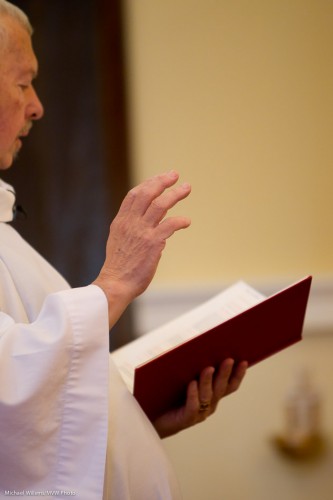A recent comment on a post prompts me to remind you of what I have explained here many times before: it ain’t all aperture that makes blurry backgrounds.
Of course aperture is a main factor: the larger the aperture (i.e. the smaller the “f-number”), the blurrier the background. So an f/1.4 lens sure is handy that way.
But other factors count too!
- Sensor: the larger the sensor, the blurrier your backgrounds can be. (Try to get blurry backgrounds with a little small-sensor point-and-shoot camera: good luck!)
- Proximity: the closer you are, the blurrier your backgrounds can be.
- Focal length: the more you zoom in, the blurrier your backgrounds can be.
Here, my food the other day at f/2.8: blurry background because I am close. I did not need f/1.4 (even f/4 would leave the background perfectly blurred).
And here, the priest at St Andrews at f/2.8. This time, blur because I am zooming in, using a 200mm focal length. Again no need for f/1.4.
OK, so you do not always need an f/1.4 lens for blurred backgrounds.
In that case, why do I love my primes?
- Light. A faster lens lets in more light, meaning you can get reasonable shutter speeds without crazy high ISO values.
- Quality. A lens is usually best when stopped down a couple of stops from wide open. So an f/1.4 lens at f/2.8 is likely to be better than an f/2.8 lens at f/2.8.
- And yes, sometimes you do want blurred background when you cannot get closer or use a longer lens!
I hope that clarifies things. You see, to be a competent photographer you need to fully understand this – it has to become part of your DNA, as I told my Sheridan College class the other day.


